-
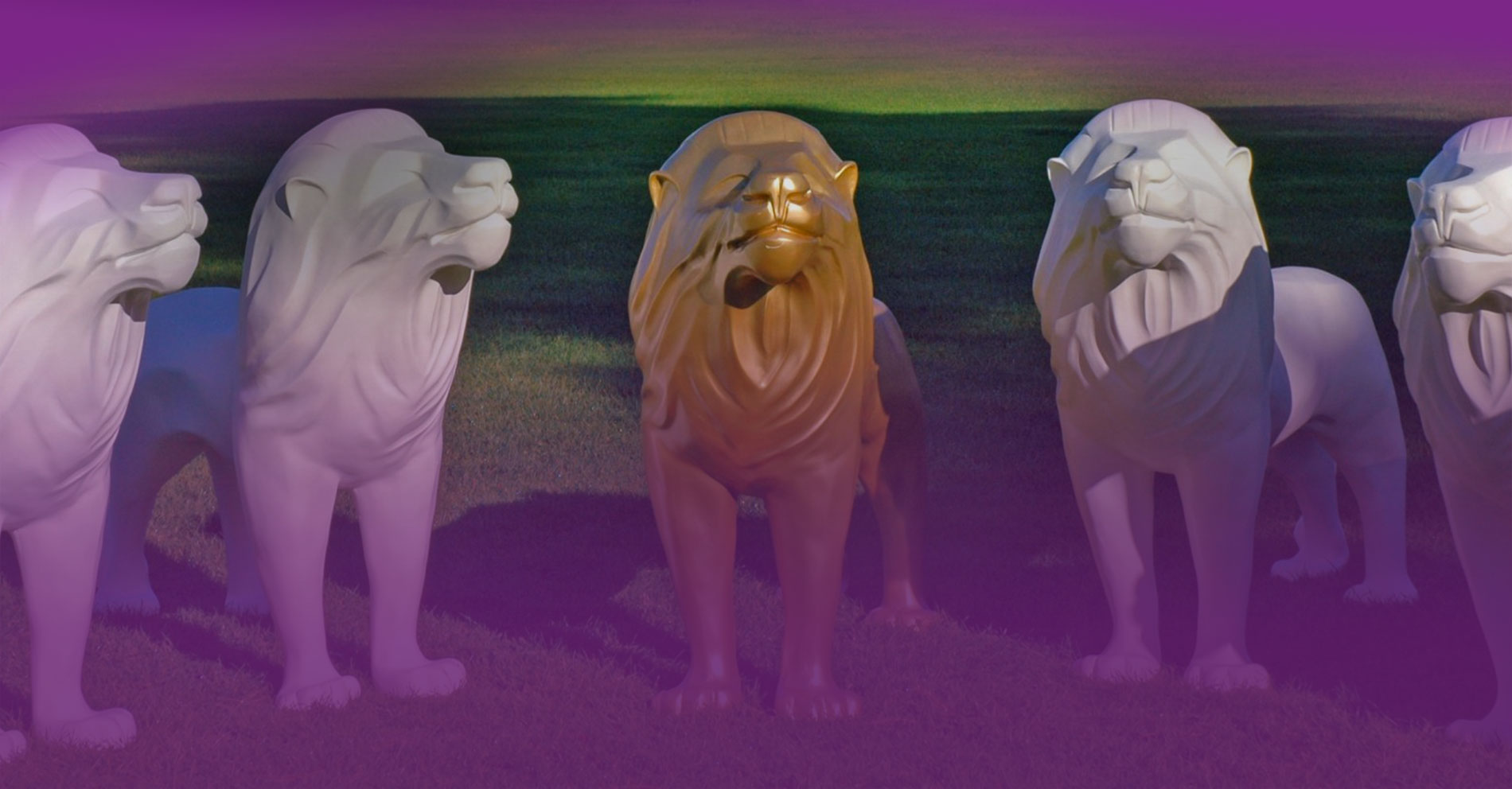 LION SCULPTUREThe birth of the pride. The King of the Beasts symbolises courage, nobility, royalty, strength, stateliness and valour, hence its popularity as a royal heraldic image.
LION SCULPTUREThe birth of the pride. The King of the Beasts symbolises courage, nobility, royalty, strength, stateliness and valour, hence its popularity as a royal heraldic image.
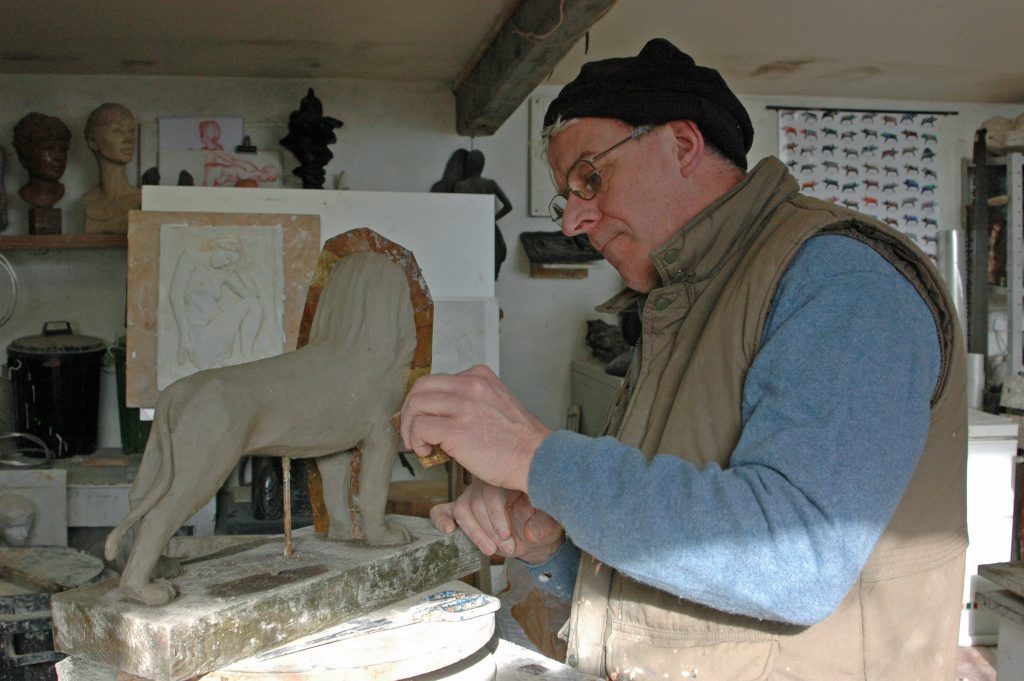
From clay...
Sculptor Alan Dun, who created the Owls of Bath 2018, Lions of Bath 2010 and Pigs of Bath 2008 sculptures, amongst many others, made the original lion maquette (small clay model) in his Limpley Stoke studio near Bath.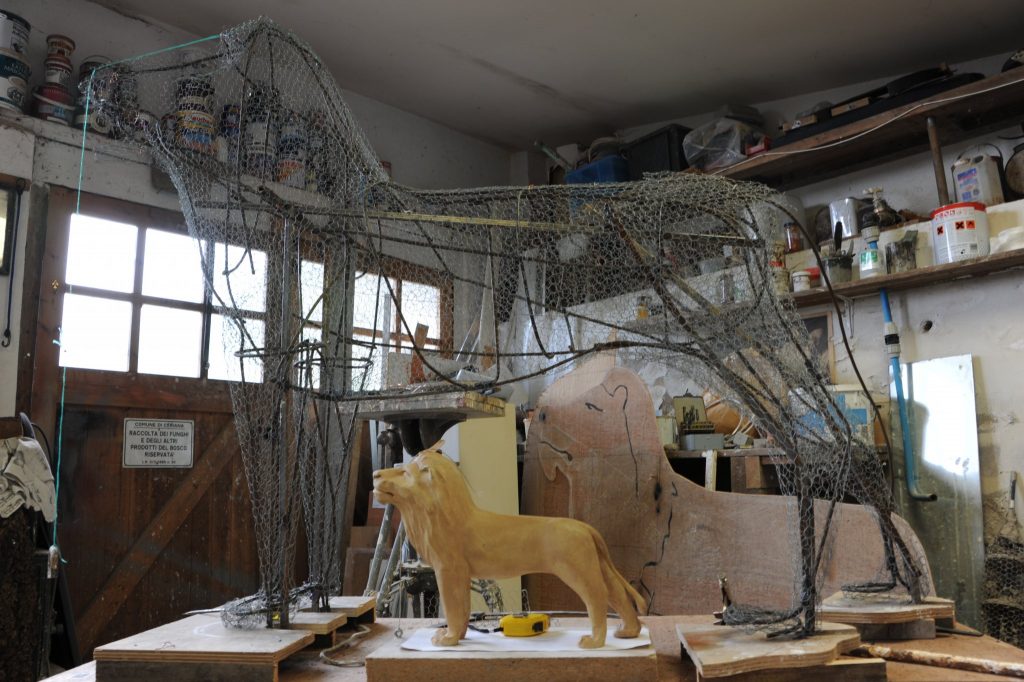
To Scaling Up...
The next stage was to scale up to create the large lion sculpture. Various sizes of lion were cut out of MDF and the 1.2m tall and 1.5m long version was chosen. Alan then created a 3D wire frame-work and then sculpted clay around it to create the final lion design.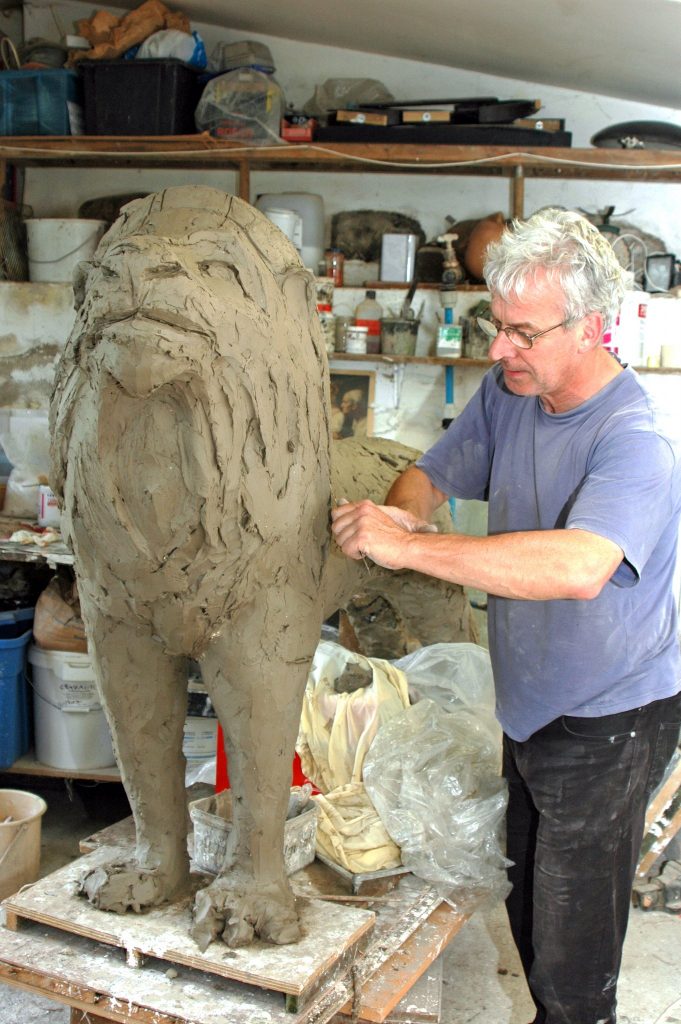
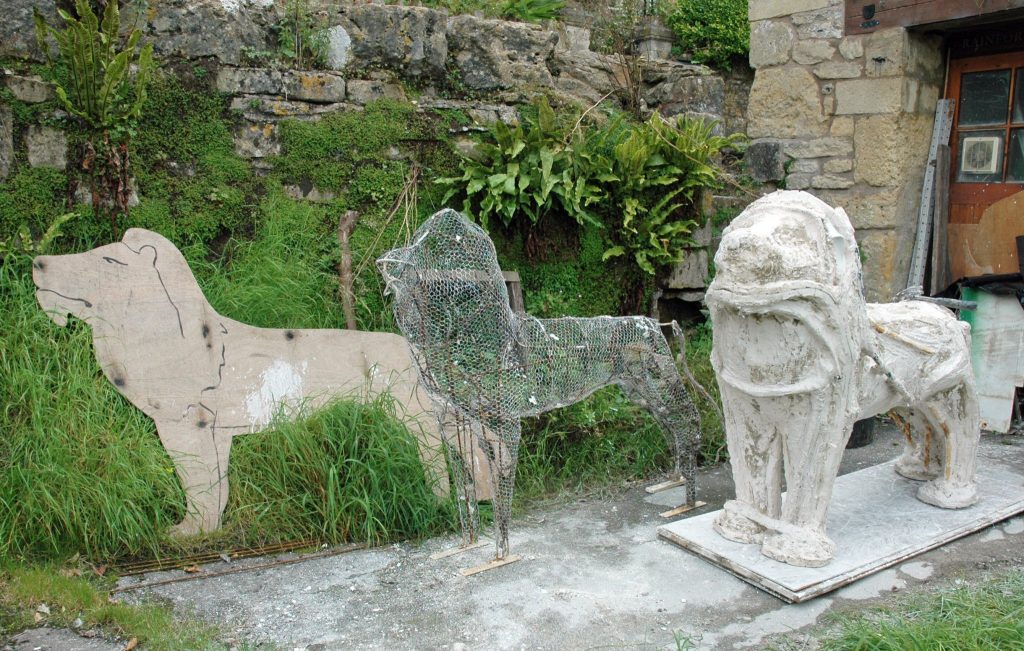
Breaking the mould...
A fibreglass mould was then made of the full-size clay lion to create the prototype fibreglass lion sculpture, which was then sent off to the GRP factory near Stonehenge. A master mould was made of the prototype, from which the rest of the pride would be born..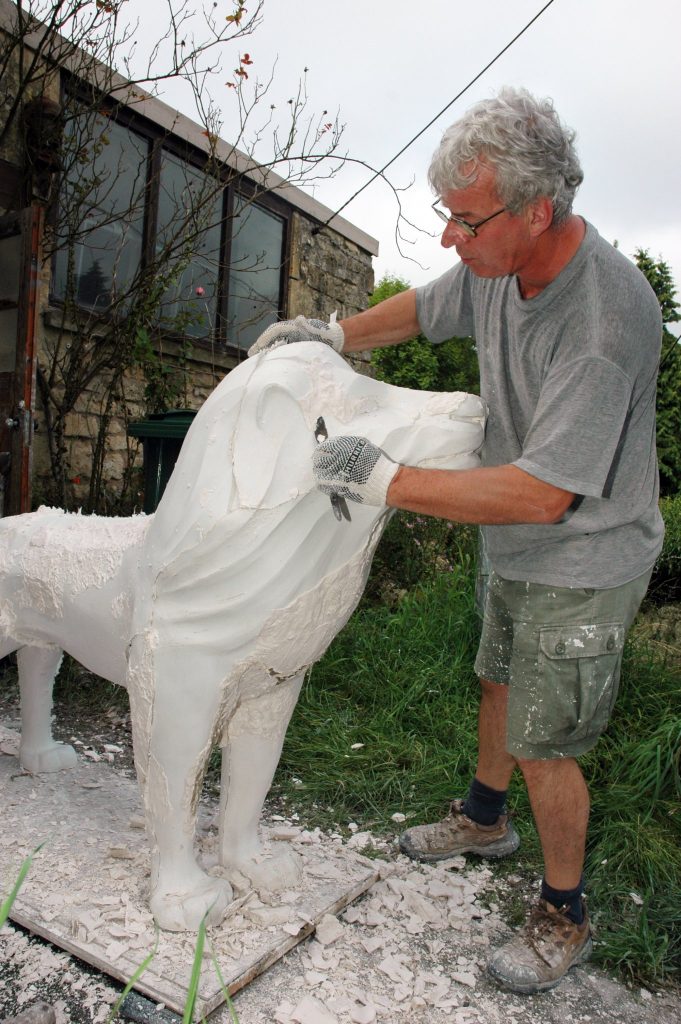
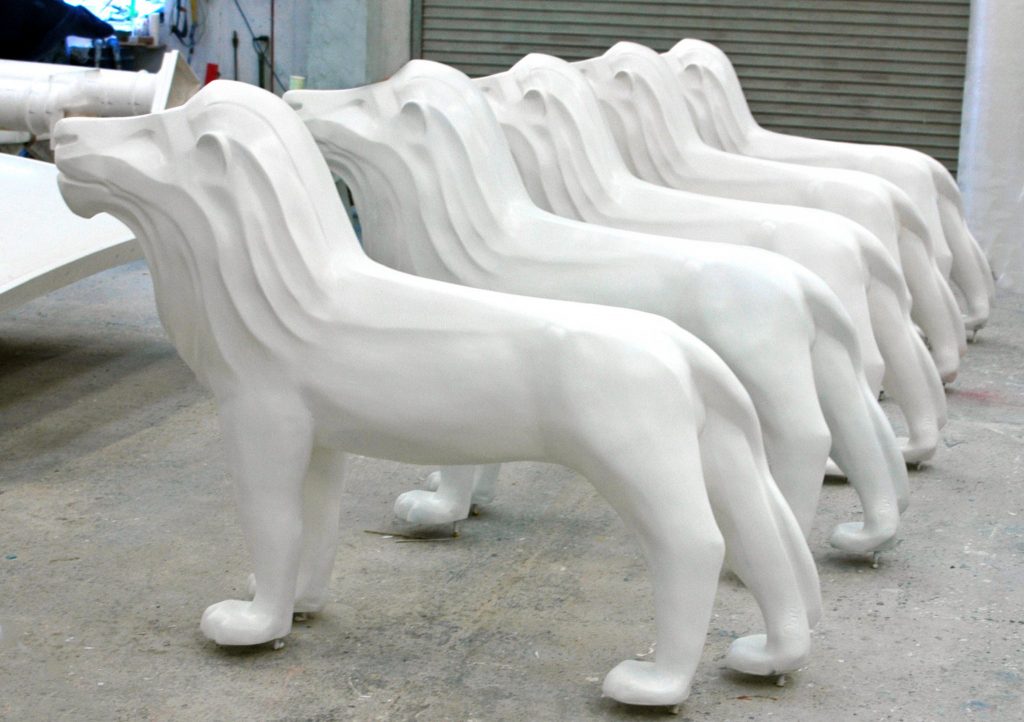
The birth of the Pride
The eye-catching lions are currently being made at the fibreglass factory. Each lion takes two days to produce from the 10 part mould. The various body parts are then joined together, sanded down by hand and then primed to create the final smooth canvas for artists to decorate. Roarsome!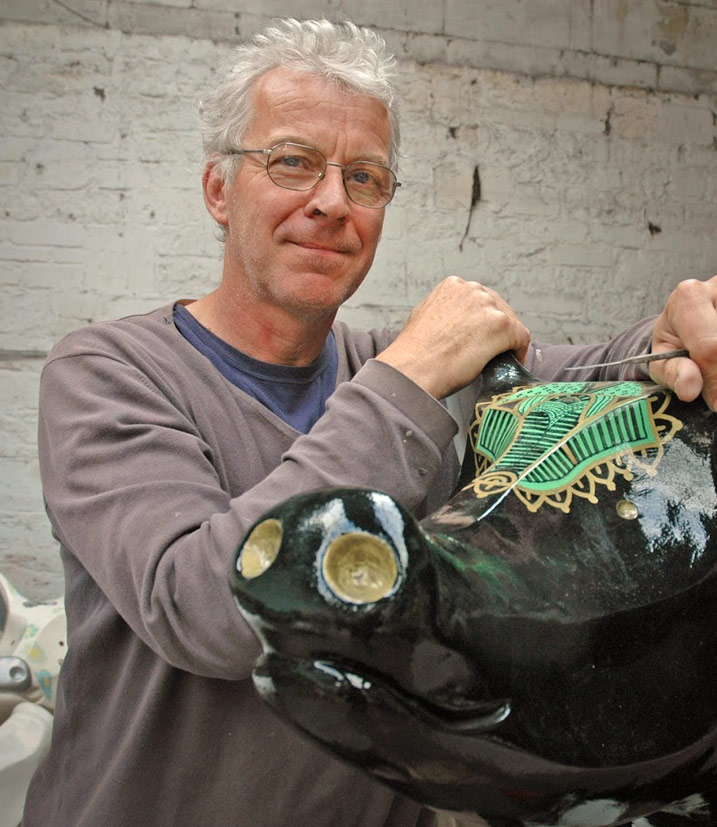
2008
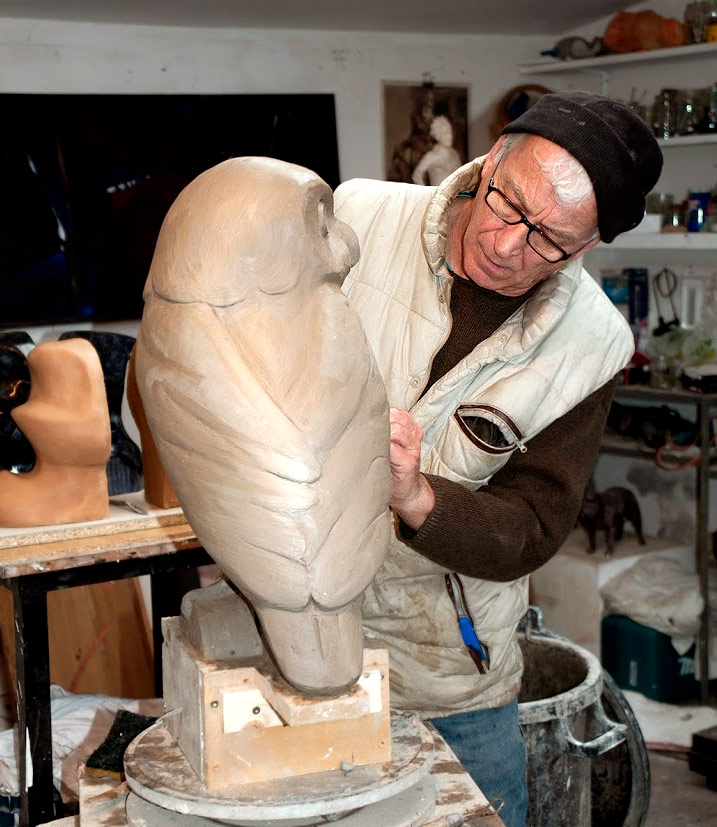
2018
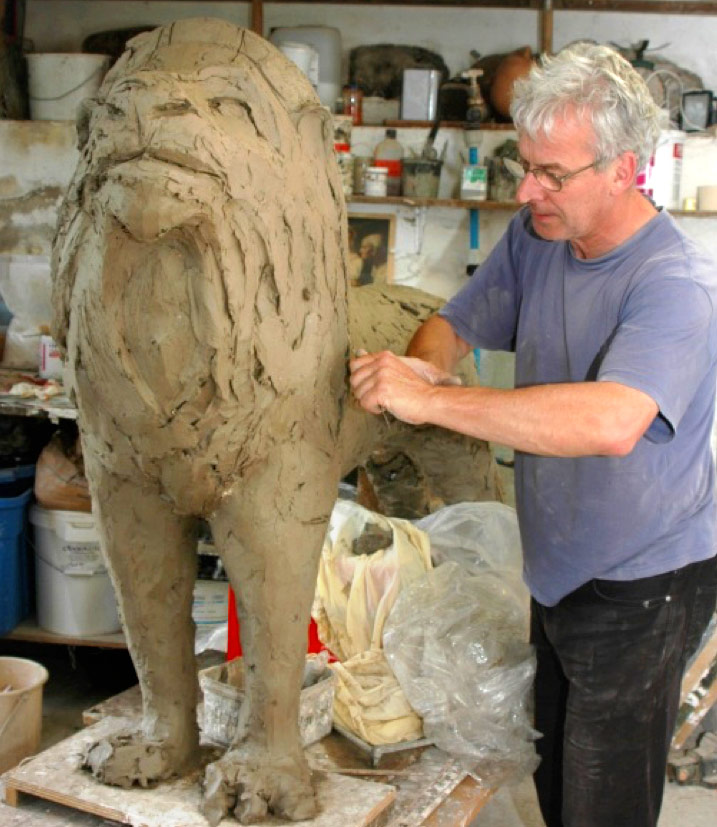
2019
LATEST NEWS
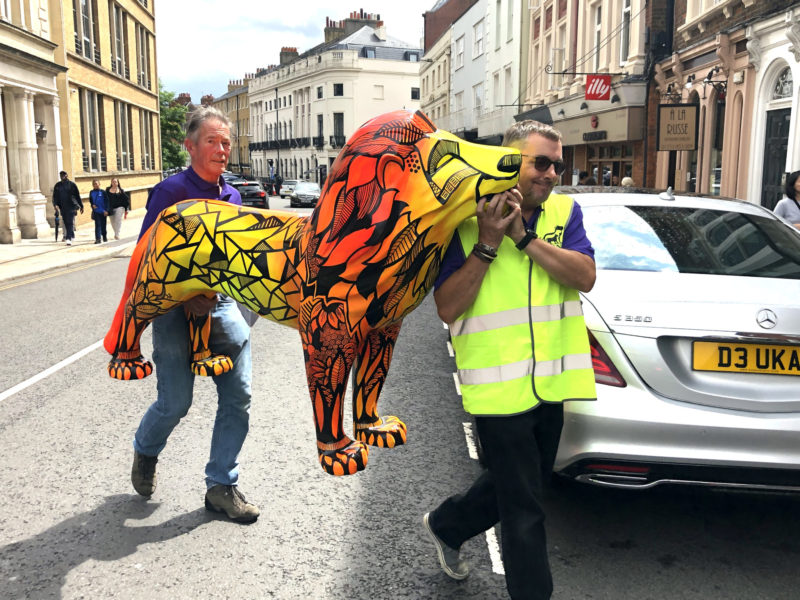
Lions in new homes for Christmas!
December 18, 2019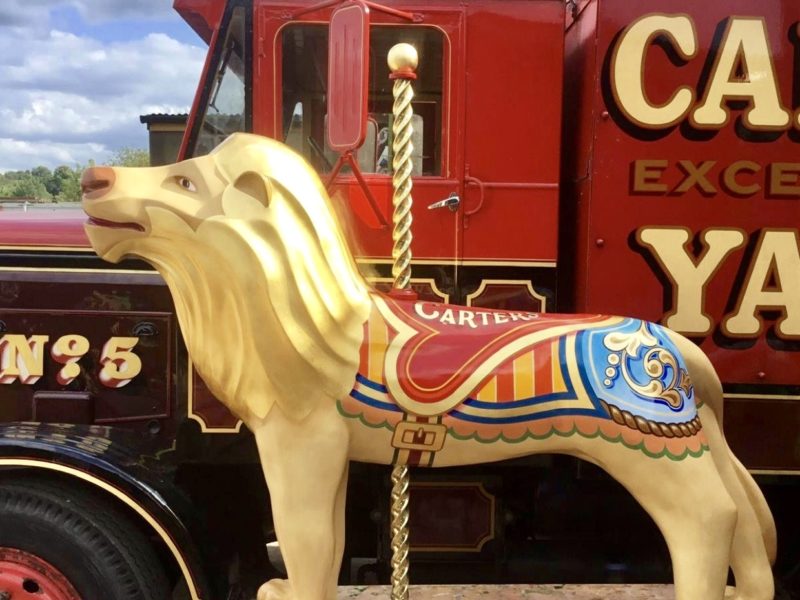
Bid for the LAST LION today!
December 14, 2019
Raffle to win a Large Lion sculpture – draw 14 December
December 4, 2019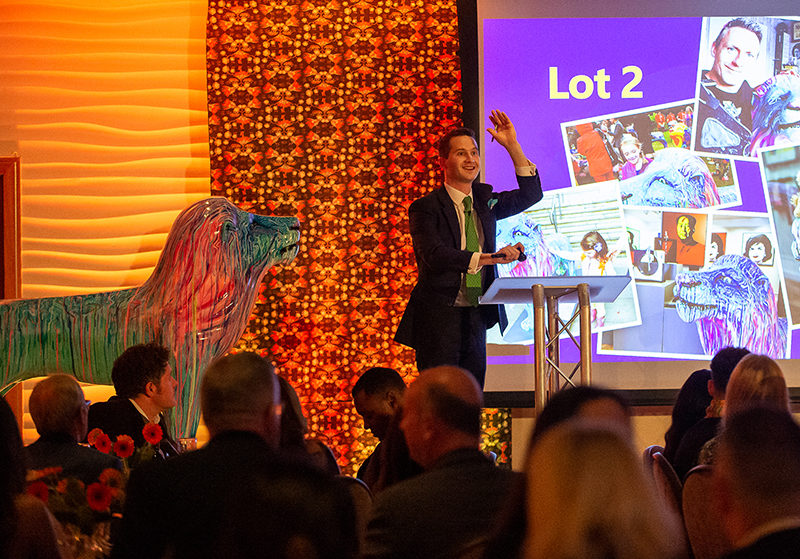
Lions Head off to Pastures New…
November 30, 2019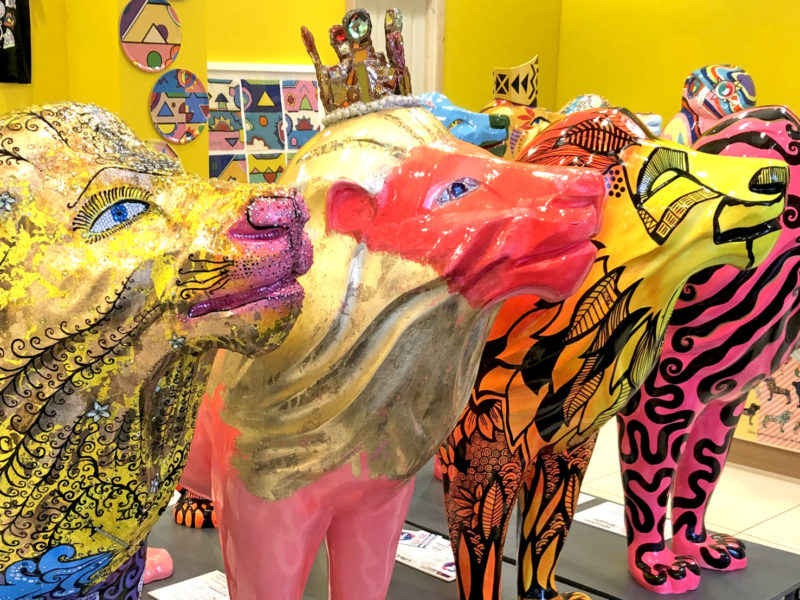
Place your bids for Thursday’s charity auction!
November 23, 2019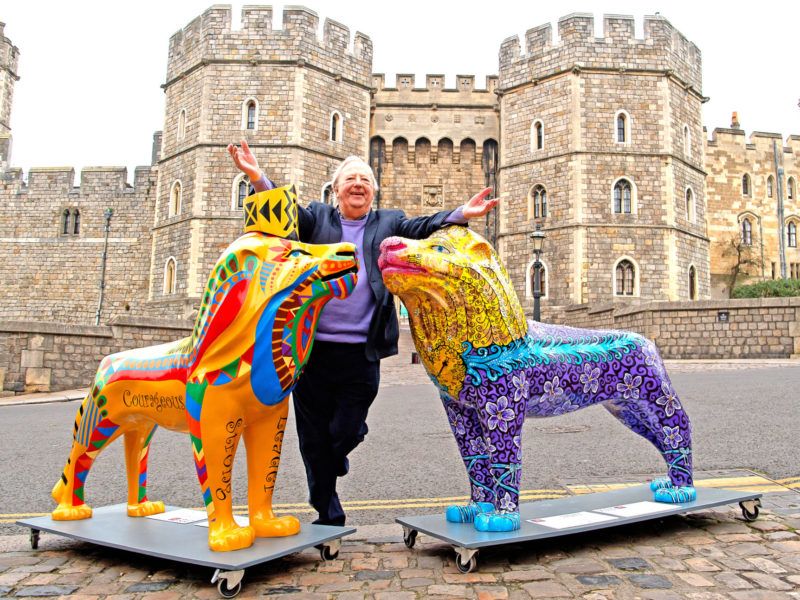
Auction Host Tim Brooke-Taylor visits the Pride!
November 23, 2019Lions run at a speed of up to 81km/h.
An adult male’s roar can be heard up to 8km away.
Lions hunt large animals such as zebra and wildebeest.
The Lion’s scientific name is Panthero Leo.
Female lions reach two-thirds of their adult size by the time they are two years old.
Numbers of wild lions in Africa have gone down by over 40% in the last three generations, due to loss of living space and conflict with people.
The name for a baby lion is a cub, whelp or lionet.
Lions are the most sociable of all big cats. They live in groups of 10-15 lions, known as prides.
With only around 20,000 left in the wild, lions are now officially classified as ‘vulnerable’.
In the wild, lions live for an average of 12 years and up to 16 years. They live up to 25 years in captivity.
Although known as the ‘king of the jungle’, most lions live on open grasslands or savannah. Only one group of wild forest-dwelling lions remains in the Gir Forest in India.
A female lion needs 5kg of meat a day. A male needs 7kg or more a day.
Headline sponsor – Windsor Yards





